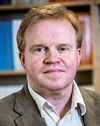A common coinage policy in the Middle Ages was ‘periodic recoinage’. Old coins were declared invalid and had to be exchanged for new ones at specified exchange rates and dates. This convention was a type of monetary taxation of local trade and inhabitants. Periodic recoinage was the dominant coinage policy in large parts of Western, Central, Eastern and Northern Europe for 120−200 years. Such a monetary policy required a restricted geographical currency area and a limited number of coins in circulation. The leaf-thin bracteates were ideal for such renewals. Numismatic theory predicts that periodic recoinage should be applied in the early developmental stages of a region, for example, when the division of labour increases, and local markets and cities are established. In later phases, when specialization occurs within and between cities, the system breaks down. A larger coin volume renders re-minting and monitoring impossible, and inter-regional trade disrupts local currency areas. This model of periodic recoinage is applied to medieval Hessen (1150−1320) and reveals that the coinage policies and economic development of Wetterau in particular, as well as those of the Marburg area and Northern and Eastern Hessen, largely correspond to this theory. However, both the frequency and continuity of renewals could vary between mints/regions and within specific mints over time.
Münzstätten, Münzprägung und Münzwege des Mittelalters im Hessen: Ergebnisse der Tagung Frankfurt und Hessen im monetären mittelalterlichen Transit
Periodic Recoinage and Economic Development in Medieval Hessen
Book Chapter
Reference
Svensson, Roger (2021). “Periodic Recoinage and Economic Development in Medieval Hessen”. In Christian Stoess, Roland Diry and Sebastian Steinbach (Eds.), Münzstätten, Münzprägung und Münzwege des Mittelalters im Hessen: Ergebnisse der Tagung Frankfurt und Hessen im monetären mittelalterlichen Transit (199–212). Berlin: Battenberg Gietl Verlag.
Svensson, Roger (2021). “Periodic Recoinage and Economic Development in Medieval Hessen”. In Christian Stoess, Roland Diry and Sebastian Steinbach (Eds.), Münzstätten, Münzprägung und Münzwege des Mittelalters im Hessen: Ergebnisse der Tagung Frankfurt und Hessen im monetären mittelalterlichen Transit (199–212). Berlin: Battenberg Gietl Verlag.
Author
Roger Svensson
Editors
Christian Stoess,
Roland Diry,
Sebastian Steinbach

